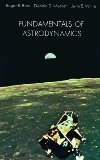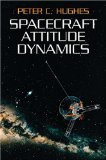nbsp;
nbsp;
Wikipedia dicit:
Psyche is a NASA space mission launched on October 13, 2023 to explore the origin of planetary cores by orbiting and studying the metallic asteroid 16 Psyche beginning in 2029. NASA’s Jet Propulsion Laboratory (JPL) manages the project.
16 Psyche is the heaviest known M-type asteroid, and may be an exposed iron core of a protoplanet, the remnant of a violent collision with another object that stripped off its mantle and crust. On January 4, 2017, the Psyche mission was selected for NASA’s Discovery #14 mission. It was launched atop a SpaceX Falcon Heavy rocket.
16 Psyche is the heaviest known M-type asteroid, and may be an exposed iron core of a protoplanet, the remnant of a violent collision with another object that stripped off its mantle and crust.
Recent studies show that it is “a mixed metal and silicate world”. Another study considers it to be either a metal core of a protoplanet or “a differentiated world with a regolith composition … peppered with localized regions of high metal concentrations”. Radar observations of the asteroid from Earth indicate an iron–nickel composition.
The Psyche spacecraft is designed with solar electric propulsion, and the scientific payload includes a multispectral imager, a magnetometer, and a gamma-ray spectrometer.
The mission is designed to perform 21 months of science. The spacecraft was built by NASA Jet Propulsion Laboratory (JPL) in collaboration with SSL (formerly Space Systems/Loral) and Arizona State University.
It was proposed that the rocket launch might be shared with a separate mission named Athena, that would perform a single flyby of asteroid 2 Pallas, the third-largest asteroid in the Solar System.
In May 2020, it was announced that the Falcon Heavy carrying Psyche would include two smallsat secondary payloads to study the Martian atmosphere and binary asteroids, named EscaPADE (Escape and Plasma Acceleration and Dynamics Explorers) and Janus respectively, but in September 2020, the EscaPADE Mars atmosphere probe was removed from the plan.
Janus was later removed from the Psyche mission as well on November 18, 2022, after an assessment determined that it would not be on the required trajectory to meet its science requirements as a result of Psyche’s new launch period.
Video credit: NASA’s Kennedy Space Center



 Subscribe to blog posts using RSS
Subscribe to blog posts using RSS










